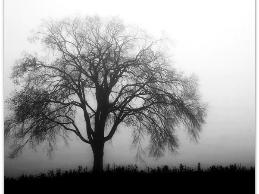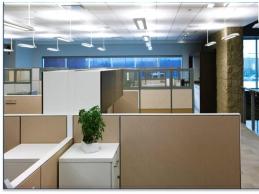On This Page
About Seasonal Affective Disorder (SAD)
Seasonal Affective Disorder (SAD) is a type of depression that is exacerbated by gray overcast skies and poor indoor lighting. Some common symptoms of SAD are:
- Oversleeping;
- Fatigue;
- Feeling lethargic;
- Irritability and stress intolerance; and
- Lack of interest in daily activities, sex, or social interactions.
Treatment for SAD usually involves medication combined with light therapy. Light therapy is exposure to high intensity bright lights, typically referred to as light or sun boxes. An individual spends a period of time each day exposed to this light, and treatment can last from 30 minutes to 2 hours per day. Many of these light boxes are portable and can be placed on a desk or table in the work environment.
Seasonal Affective Disorder (SAD) and the Americans with Disabilities Act
The ADA does not contain a definitive list of medical conditions that constitute disabilities. Instead, the ADA defines a person with a disability as someone who (1) has a physical or mental impairment that substantially limits one or more "major life activities," (2) has a record of such an impairment, or (3) is regarded as having such an impairment. For more information about how to determine whether a person has a disability under the ADA, see How to Determine Whether a Person Has a Disability under the Americans with Disabilities Act Amendments Act (ADAAA).
Accommodating Employees with Seasonal Affective Disorder (SAD)
People with seasonal affective disorder may develop some of the limitations discussed below, but seldom develop all of them. Also, the degree of limitation will vary among individuals. Be aware that not all people with SAD will need accommodations to perform their jobs and many others may only need a few accommodations. The following is only a sample of the possibilities available. Numerous other accommodation solutions may exist.
Four basic light products are available to accommodate workers with SAD:
- Sun Boxes and Lights: These are rectangular light fixtures that have several fluorescent tubes that produce between 5,000 and 10,000 lux and come in many different sizes and styles.
- Light Visors: These are head-mounted light sources that resembling tennis visors and are good choices for people who do not have sedentary jobs or need to be mobile during the day.
- Sun Simulating Desk Lamps: These resemble typical office lamps.
- Dawn Simulators: These are devices that mimic natural sunrises by gradually brightening rooms over programmed periods of time.
JAN's Accommodation Solutions: Executive Functioning Deficits is a publication detailing accommodations for individuals with limitations related to executive functioning. These ideas may be helpful in determining accommodations.
Questions to Consider:
- What limitations is the employee experiencing?
- How do these limitations affect the employee and the employee’s job performance?
- What specific job tasks are problematic as a result of these limitations?
- What accommodations are available to reduce or eliminate these problems? Are all possible resources being used to determine possible accommodations?
- Once accommodations are in place, would it be useful to meet with the employee to evaluate the effectiveness of the accommodations and to determine whether additional accommodations are needed?
- Do supervisory personnel and employees need training?
Accommodation Ideas:
Situations and Solutions:
The following situations and solutions are real-life examples of accommodations that were made by JAN customers. Because accommodations are made on a case-by-case basis, these examples may not be effective for every workplace but give you an idea about the types of accommodations that are possible.
JAN Publications & Articles Regarding Seasonal Affective Disorder (SAD)
Publications
Consultants' Corner Articles
Related Disabilities
Articles
- Accommodations Beyond Job Performance = Compliance and Inclusion
- Cognitive Impairment and the Interactive Process
- I Understand You Are Stressed...But Aren’t We All?
- Return to Work After Hospitalization for Mental Health Treatment
- Suicidal Ideation in the Workplace
- Supporting Employees with Mental Health and Cognitive Conditions while Teleworking







